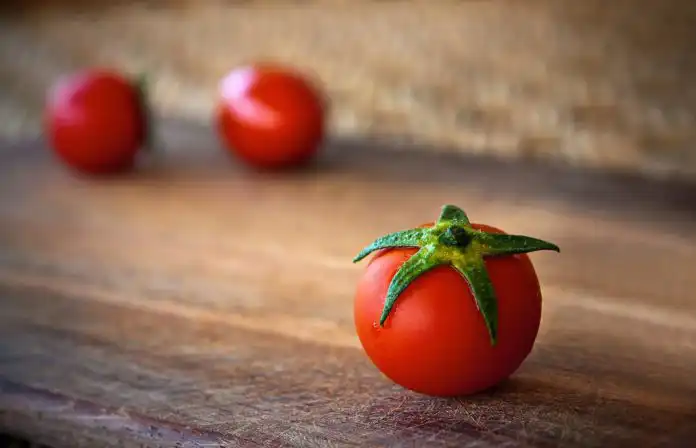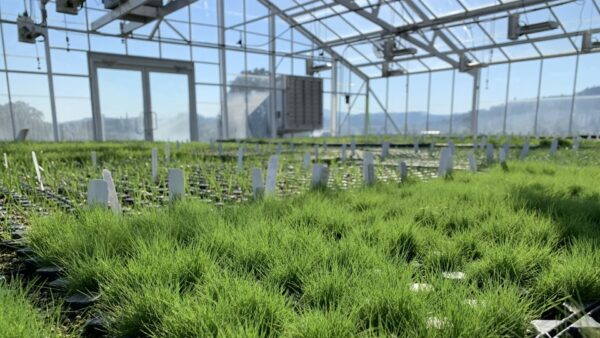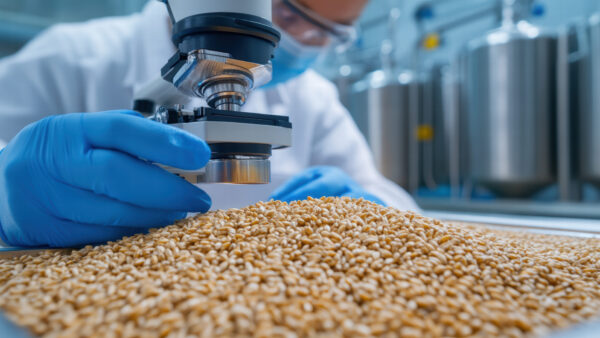Lettuce plants might help eradicate the polio virus, which is still causing death and disability in some parts of the world.
Although the polio virus has been eradicated in most places around the globe thanks to effective vaccines, it’s still a reality for people in some parts of the Middle East. Afghanistan and Pakistan remain polio-endemic, according to the World Health Organization (WHO). And that means that as long as polio is present on the planet, the potential for more outbreaks is always real.
Seventy-four cases of polio were reported in 2015. One in 200 infections leads to irreversible paralysis. Among those paralyzed, five to ten percent die when their breathing muscles become immobilized. Children under five years of age are the ones mainly affected.
There are two vaccines available, but both have their drawbacks and one is being phased-out this year upon the recommendation of the WHO, meaning a new vaccine solution is desperately needed in order to save lives and hopefully eliminate the virus once and for all.
That solution is being found in what some might consider a very unlikely place. Plants are coming to the rescue in the latest attempt to create a new polio vaccine.
With a new study led by Henry Daniell, a professor of biochemistry in the School of Dental Medicine at the University of Pennsylvania, researchers are using Daniell’s plant-based vaccine production platform — in which lettuce incorporates a gene of interest into its DNA and then produces the associated protein in its leaves — to develop the booster for polio.
The research is funded with support from the Bill and Melinda Gates Foundation.
Daniell and his team are targeting viral protein 1, or VP1, which is present on all three serotypes of the polio virus. After confirming that they could stably produce the protein in lettuce plants, they fed the VP1-containing plant material to mice that had been primed with the inactive vaccine. It was successful in creating immunity to the virus.
“Our vaccine research has the potential to provide a timely solution to deal with polio outbreaks around the globe,” Daniell says.
“Eradicating polio will be one of the greatest public health achievements in history and ensure that every child — now and for generations to come — is able to live a polio-free life.”
—Peter Bloland
Vaccine Woes
Two vaccines for polio are currently used throughout the world. Oral polio vaccine (OPV), which is being phased out, uses live virus and is cost effective to produce, but doesn’t prevent the virus from being shed through bodily waste and possibly passed on to others — a particular problem in countries where sanitation is a major concern.
Inactivated polio vaccine (IPV) is safer, but costs more to produce. Because it is given as a shot rather than orally, it is more difficult to administer as well.
The WHO, recognizing the problems with the oral vaccine, is now recommending that everyone in the world receive a dose of IPV. But the need for boosters remains, particularly in the very young and very old, whose immune systems are not as efficient, Daniell notes.
He believes his virus-free vaccine created by plants, which could be produced relatively inexpensively and does not require refrigeration or special handling, could be an important component in reaching the goal of global polio eradication.
“We can ship capsules to every corner of the world and boost that IPV inoculation,” he says. “It’s time to improve upon the vaccinations we’ve been using for 75 years.”
Using plants to create a vaccine comes with a number of advantages, explains David Rowlands of the University of Leeds’ Faculty of Biological Sciences, who helps lead a separate project which is also using plants to develop a new polio vaccine.
The global consortium has been awarded $1.5 million by the WHO to develop a safer polio vaccine, using a new technique developed at the John Innes Centre in the United Kingdom. The University of Leeds-led research project aims to develop ways of making new polio vaccines without using the live virus, and exploring different methods for their production.

Although the principle of using plants is well established, no major plant-based vaccine has yet been widely introduced. The goal is to use plants to produce virus-like particles (VLPs), proteins that resemble the polio virus but do not actually carry any of its genetic material.
“Growing large quantities of VLPs in plants is surprisingly easy and incredibly efficient. You simply introduce bacteria containing the genes for the VLP into the plant, which results in the plant’s cells making many copies of the VLP,” says George Lomonossoff of the biological chemistry department at the John Innes Centre.
“The process, from introduction of the bacteria to harvesting the VLPs from the crushed leaves, can take just a matter of weeks. The added beauty of this technique is that the risk of contamination with other human viruses using this production technique is significantly lower than some other vaccine production systems.”
The two vaccines currently used throughout the world are produced through much different means. The inactive vaccine is grown in a type of monkey kidney tissue culture, and the virus is then inactivated with formalin. The oral vaccine is produced by the passage of the virus through non-human cells, which produces spontaneous mutations in the viral genome.
“We know that our approaches using plants create stable vaccines that are effective against the virus in the lab. The next stage is to show how they can be manufactured cost effectively on the scale needed to replace the current vaccines,” Rowlands says. “The fundamental challenge is to build protein shells that are the same as the virus but that do not have any of the genetic material of the virus,” he says.
“Until now, the problem with this approach to developing a new polio vaccine has been that, though we’ve been able to create these empty virus-like particles (VLPs), they have been significantly less stable than the complete virus and were therefore not suitable for making vaccines.”
The U.K. consortium’s research has developed methods of building the genome-free particles for all three types of the virus with the stability needed by the researchers. Like Daniell’s vaccine, the particles will “trick” the body into developing immunity to the polio virus, despite not containing any of the actual virus.
In Daniell’s work, the researchers used two different growing systems. One was in the greenhouse at Pennsylvania State’s Pennovation Works campus, a high-tech facility that grows the plant in soil and uses natural light. The second was the Fraunhofer USA facility, which more closely replicates how a commercial pharmaceutical production facility would run, using a hydroponic system and artificial lighting.
A hydroponic system could also easily be scaled up by adding racks and thus using vertical space, which a traditional greenhouse could not do. The researchers were able to harvest a new batch of pharmaceutical-containing lettuce every four to six weeks.
“Our vaccine research has the potential to provide a timely solution to deal with polio outbreaks around the globe.”
—Henry Daniell
The End of Polio?
There has never been a better time to eradicate polio than now, notes Peter Bloland, acting director of Center for Disease Control’s Global Immunizations Division, Center for Global Health. With polio cases lower than ever, eradicating the virus is within reach, he says.
“With the right political commitment at all levels to improve surveillance and reach unvaccinated children, and with sufficient financial resources and technical support, Afghanistan and Pakistan have an extraordinary opportunity to take the world over the finish line and end polio for good. Eradicating polio will be one of the greatest public health achievements in history and ensure that every child — now and for generations to come — is able to live a polio-free life.”
According to Steve Oberste, microbiologist in the CDC’s Division of Viral Diseases, National Center for Immunization and Respiratory Diseases, the ability to create a vaccine without using any actual polio virus holds tremendous potential.
“A vaccine made without infectious virus is safer to produce — there is a lower risk in case of a spill within a manufacturing facility,” he says. “Because of this lower risk, a vaccine made without infectious virus is safer to produce in a developing country where personnel and other costs are lower and where production is closer to the customer, thus lowering shipment costs. Lower cost vaccines should make it possible to make vaccines available to a wider population.”
In fact, the ability to create cheaper vaccines goes far beyond polio. Daniell says the concept of a low-cost booster vaccine could be used for many other viral diseases, as immunity can wane in old age, leading to reactivation of a latent virus. Shingles is an example.
“This could be avoided with a simple boosting,” he says.
—with files from Katherine Unger Baillie and Geraldine Platten












